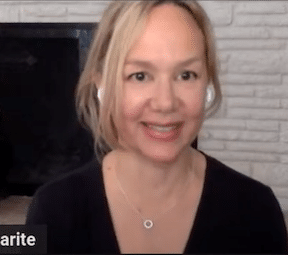Everyone notices pacing in a story, whether they can label it or not. There’s an expectation in fiction that a story will not only contain certain elements but deliver them at a pace that feels right for the setting and characters.
What is pacing?
Pacing is the speed with which a story is told. That seems like a strange concept for writing. Speed feels like a visual concept, more important for TV or film. Or it seems dependent on the reader and how fast they consume the material.
But the speed of a story is dictated by the author, and speed controls pace. Some stories are leisurely and some are frenetic, but most are a combination that never reaches either extreme.
Pacing is determined by factors like word and sentence length, paragraph length and chapter length. Short sentences, paragraphs and chapters increase the pace. Action scenes are usually structured this way to give a sense of urgency to the sequence.
Detailed descriptions using longer sentences and paragraphs slow down the pace. Some entire books use this structure, creating serenity and depth of experience through pacing.
Most stories use both. Character building and scene-setting are slower, conflict or catalyzing events are faster. Reaction slows down again. That ebb and flow are what most readers expect.

It’s important to remember that faster does not equal better. Some readers prefer fast-paced stories and seek them out. Others prefer something that takes its time to unfold while they enjoy the ride.
There is no right or wrong choice here. It’s the author’s story and it should be paced as he or she sees fit. Where pacing goes wrong is when it isn’t planned properly or doesn’t fit the story elements.
Authors should strive for consistent pacing. The term doesn’t mean that an entire story is told at exactly the same pace. It means that the author maintains a consistent flow, with fast and slow sequences coming in a logical, predictable fashion.
It also means that the author is avoiding abrupt changes in pace without cause. That’s another misstep that can be avoided with careful planning, or fixed with intelligent editing.
Pacing is what keeps readers reading — and turning pages. Most readers have experienced a novel that simply doesn’t keep their attention. That could be the result of the subject matter, but it could easily be that the pace is too fast or slow for their liking.
Different readers look for different paces. Different genres also tend to have different pacing structures. Someone picking up a thriller is going to expect a very different type of pace than someone choosing nature fiction.
All readers are looking for a pace that fits the topic and structure of the novel or story. When planning, the author needs to identify sections that set the scene, add texture and flesh out characters — and pace them differently from those that drive the plot forward with more intensity.
Pacing also helps create atmosphere and allows readers to bond with characters. Rich, detailed, descriptive paragraphs offer an entry into the world presented in the story. Chapters that detail backstory build tension as a story heads toward its central conflict.
Narrative devices such as inner monologues tend to slow down the action and give readers time to get to know the characters. These slower sections establish language patterns and personality traits for the characters. Once established, they don’t need to be repeated during faster-paced sections or action scenes.
The single rule of good pacing
Of all the things that are written about the importance of pace and how to make sure it’s built into the story from the beginning, there is one simple thing to remember.
Pace is what moves the plot and story forward.
Poor pacing allows a story to drag or sets it up to be unbearably frenetic. Or worse, it creates an exhausting combination of the two. It’s important not to bore the readers, but it’s also crucial to avoid giving them whiplash with discordant and unpredictable pace changes.
It is those types of changes that make a story feel choppy and unbalanced. Even if the characters are likable and the plot is well-conceived, uneven pacing can throw the entire story off-kilter.
Good pacing looks different to different readers. Good pacing also looks different from one genre to the next.
In general, fast-paced stories make use of the short structure mentioned above. Short words, sentences, paragraphs, and chapters are the key. Thrillers and other books filled with action sequences make liberal use of these to keep people moving from one scene to the next.
How other authors use pacing
James Patterson’s early works are a master class in the use of short chapters. Even a casual reader notices and keeps reading knowing that the next chapter will be short. And they read another, and another. These books are the very definition of page-turners.
Other authors and stories have different goals for their characters and readers. Detailed descriptions of place allow a reader to settle into the world of a story. Rich character backstories allow the reader to invest. Those backstories can also create tension as they supply motivation for behavior.
In Where the Crawdads Sing, Delia Owens’ pacing flows beautifully. She moves seamlessly through lovingly detailed nature descriptions and into conflict sequences using those same settings. Her heartbreakingly detailed backstories give depth and meaning to her characters’ actions in the present.
Barbara Kingsolver also uses rich descriptions of natural settings and characters’ lives as the backbone of her novels. The slow way in which the setting is established and the story unfolds makes the faster-paced conflicts that follow feel more urgent and meaningful.
A well-paced story feels balanced.
A well-paced story adjusts length and detail to invest the reader in the outcome of the central conflict and build tension as it approaches.
A well-paced story is one with intent. Carefully planned and plotted, the author knows when to slow down and fill in their setting and characters and when to pare down, speed up, and push the story forward.
There is no one-size-fits-all rule that governs when paragraphs should be long or short or prose should be flowing or terse. But pacing should be intentional and well planned to be as effective and affecting as possible.
Further reading
For more on this subject, we recommend these articles:
- How to create strong pacing for your story (Well Storied)
- Pacing in writing (Reedsy)
- 7 quick tips for mastering pacing in your story (Writers Edit)
- How to pace your story (Turner Stories)
- 5 ways to pace your story (Helping Writers Become Authors)
- Pacing in writing: 5 tips (Now Novel)
- Tips on Writing Action (Janice Hardy blog)
- Fixing problem pacing (Janice Hardy blog)
- Pacing and momentum in revision (Writers Helping Writers)Creating atmosphere (Writers Helping Writers)







Well explained! Thank you!